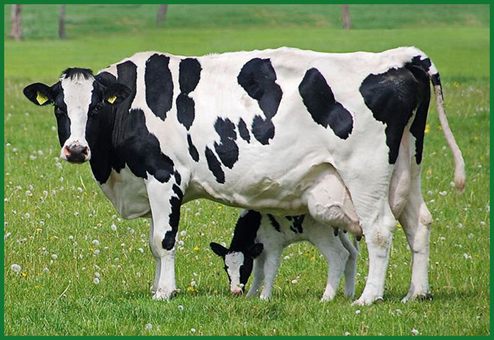Dry Cows and Calving Paddocks
More and more people are looking to calve cows outside to reduce costs and offer a more healthy environment for the calving cow. There is however evidence now of increasing levels of environmental mastitis in cows being calved at grass due to them picking up E. Coli during the dry period.
This would suggest that cleanliness of the calving paddocks needs to be given more careful consideration to avoid cows being infected in subsequent lactation. The stocking rate in the paddock and ensuring dry cows are rotated around fresh paddocks are key to ensure good udder health.
 Dry cow paddocks can be stocked at 7 cows per acre and the rotation should prevent cows being in a paddock for more than two weeks in a row and allow a four-week break between grazing. This will help to reduce the incidence of environmental mastitis that shows itself in the following lactation.
Dry cow paddocks can be stocked at 7 cows per acre and the rotation should prevent cows being in a paddock for more than two weeks in a row and allow a four-week break between grazing. This will help to reduce the incidence of environmental mastitis that shows itself in the following lactation.
Grazing should be managed to ensure 5 kgs of straw is eaten per cow per day.
Remember dry cow paddocks should be low in potassium to avoid issues with milk fever at calving of impaired calcium mobilisation. Low levels of nitrogen are also important with high levels in the grass eaten by dry cows impairing uptake of calcium from the gut. Generally cutting the paddock for silage a couple of times first and NOT applying nitrogen after the second cut should prevent this being an issue. No phosphate fertiliser should be applied before or after silage cuts. It can be topped up later once the dry cows have finished grazing.
To discuss this and other grazing queries further, contact Phil Cooper on 07798 673665 or e-mail pcooper@fcgagric.com
Recent Articles
- Do You Know the Benefits of a Health and Heat Detection System?
- Have you Ordered Your Silage Inoculant?
- Growing More Grass With Less Nitrogen, Where Do I start?
- A Real Recognition of The Importance of Food Security or Simply A Reconciling of DEFRA Budgets?
- Silage Sheet Prices Available!
- Are Your Cows at Risk of Grass Staggers?
- Feed Late Afternoon and Calve in Daylight Hours!
- Q Fever
- Aerating Your Soil Without A Machine? – Gerard Finnan
- Why Are You Not doing a Soil Management Plan?

